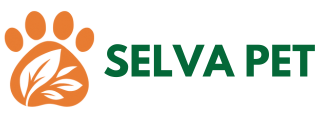Techniques positives : éducation des chiots sans traumatisme vous guidera à travers les meilleures façons d'enseigner à votre chiot. Vous découvrirez les l'importance du renforcement positif et pourquoi c'est la clé d'un animal heureux et obéissant. Dans cet article, vous découvrirez des méthodes douces qui créent un lien d'amour entre vous et votre chiot. Préparez-vous à vivre une expérience d'apprentissage sans stress tout en aidant votre ami à fourrure à prendre confiance en lui.
Comprendre les techniques positives : Le dressage des chiots sans traumatisme
Lorsque j'ai commencé à m'occuper de chiots, j'ai vite compris qu'il était important d'utiliser des produits d'hygiène. techniques positives pour le dressage. Il s'agit de créer un environnement stimulant où votre ami à quatre pattes se sent en sécurité et aimé. L'éducation des chiots sans traumatisme n'est pas seulement un mot à la mode ; c'est une philosophie qui peut transformer la façon dont nous interagissons avec nos animaux de compagnie. En nous concentrant sur le renforcement positif, nous pouvons créer un lien fort avec nos chiots tout en leur apprenant des compétences essentielles.
Les techniques positives consistent à récompenser les comportements souhaités plutôt qu'à punir ceux qui ne le sont pas. Cette approche favorise la confiance et encourage votre chiot à apprendre sans crainte. Imaginez votre chiot remuer la queue, impatient d'apprendre, plutôt que de se recroqueviller dans la crainte d'une réprimande. C'est la magie de une formation sans traumatisme!
D'après mon expérience, la première étape consiste à comprendre la personnalité unique de votre chiot. Certains chiots sont naturellement plus timides, tandis que d'autres sont audacieux et aventureux. Adapter vos méthodes de dressage à leur tempérament peut faire toute la différence. Par exemple, un chiot timide peut avoir besoin de plus d'encouragements et de patience, tandis qu'un chiot plus confiant peut s'épanouir en relevant des défis.
L'importance du renforcement positif dans le dressage des chiots
Renforcement positif est la pierre angulaire d'un dressage efficace des chiots. C'est simple : lorsque votre chiot fait quelque chose de bien, vous le récompensez ! Il peut s'agir d'une friandise, d'un compliment ou même d'une séance de jeu amusante. Je ne saurais vous dire combien de fois j'ai vu les yeux d'un chiot s'illuminer lorsqu'il se rendait compte qu'il avait fait quelque chose de bien.
Pourquoi est-ce si important ? Le renforcement positif aide les chiots à associer un bon comportement à des résultats positifs. Cela rend non seulement l'apprentissage agréable, mais renforce également le lien entre vous et votre chiot. Je me souviens de la première fois que mon chiot, Bella, a appris à s'asseoir. Je lui ai donné une friandise et l'ai couverte d'éloges, et vous pouviez voir la joie dans ses yeux.
En outre, le renforcement positif est un excellent moyen d'endiguer les comportements indésirables. Au lieu de gronder votre chiot parce qu'il mâche vos chaussures préférées, redirigez son attention vers un jouet à mâcher et récompensez-le lorsqu'il s'y adonne. Vous lui apprendrez ainsi ce qui est acceptable tout en gardant le processus de dressage amusant et engageant.
Méthodes douces d'éducation des chiots : Une approche aimante
Lorsqu'il s'agit de méthodes douces de dressage des chiots, l'amour est l'ingrédient clé. J'ai toujours pensé que le dressage devait être une expérience de rapprochement, et non une bataille de volonté. Les méthodes douces mettent l'accent sur la gentillesse et la compréhension, créant ainsi un espace sûr pour que votre chiot apprenne et grandisse.
L'une de mes techniques douces préférées est le clicker training. Il s'agit d'une méthode simple mais efficace qui utilise le son d'un clic pour marquer les comportements souhaités. Lorsque votre chiot entend le clic, il sait qu'il a fait quelque chose de bien et vous pouvez lui donner une friandise. Cette méthode est non seulement efficace, mais elle renforce également la communication avec votre chiot.
Une autre approche douce consiste à utiliser le langage corporel et le ton de la voix. Les chiots sont incroyablement perspicaces et peuvent percevoir vos émotions. J'utilise souvent un ton doux et encourageant lorsque Bella fait quelque chose de bien. Cela renforce son bon comportement et lui donne le sentiment d'être aimée et appréciée.
N'oubliez pas que la patience est essentielle lorsque vous utilisez des méthodes de dressage douces. Les chiots découvrent le monde et ont besoin de temps pour comprendre ce que l'on attend d'eux. Célébrez les petites victoires en cours de route et n'hésitez pas à combler votre chiot d'amour et d'affection.
L'obéissance canine sans stress : Apprendre en s'amusant
L'apprentissage de l'obéissance ne doit pas être une corvée ! En fait, si vous rendez l'apprentissage amusant, votre chiot sera plus enclin à participer. J'ai découvert que l'intégration de jeux dans les séances de dressage peut réduire considérablement le stress, tant pour vous que pour votre chiot.
Par exemple, jouer à cache-cache peut être un excellent moyen de renforcer des ordres tels que "viens" ou "reste". Je me cache souvent dans différentes pièces et j'appelle Bella par son nom. Lorsqu'elle me retrouve, je la récompense avec des friandises et beaucoup d'éloges. Cela lui apprend non seulement à venir quand on l'appelle, mais transforme aussi le dressage en un jeu amusant.
En outre, pensez à utiliser des jouets interactifs qui stimulent l'esprit de votre chiot. Les casse-tête peuvent être un excellent moyen de les garder occupés tout en renforçant les comportements positifs. J'ai vu Bella passer des heures à chercher comment obtenir une friandise à partir d'un puzzle, et c'est un excellent moyen de la stimuler mentalement.
La clé d'une obéissance canine sans stress est de faire en sorte que les séances de dressage soient courtes et agréables. Les chiots n'ont pas une grande capacité d'attention. Il faut donc prévoir des séances de 5 à 10 minutes, avec du plaisir et des récompenses. De cette façon, votre chiot attendra l'entraînement avec impatience au lieu de le redouter.
Techniques de dressage sans cruauté des chiots pour des liens durables
Les techniques de dressage sans cruauté des chiots ont pour but de favoriser une relation affectueuse entre vous et votre animal. J'ai toujours pensé que la base de tout dressage devait reposer sur le respect et la gentillesse. Lorsque vous traitez votre chiot avec compassion, vous créez un environnement dans lequel il se sent en sécurité.
Une technique humaine que j'adore consiste à utiliser des temps morts au lieu de punitions. Si Bella est trop turbulente ou qu'elle me mordille les mains, je la place doucement dans une zone de retrait pendant quelques minutes. Cela lui permet de se calmer et de réfléchir à son comportement. Ensuite, je l'accueille à bras ouverts pour lui rappeler qu'elle est toujours aimée.
Une autre technique humaine efficace consiste à favoriser l'instauration d'une routine. Les chiots se nourrissent de cohérence et un emploi du temps structuré peut les aider à se sentir plus en sécurité. Par exemple, je nourris toujours Bella à la même heure chaque jour et j'intègre des séances de jeu et de dressage régulières. Cette prévisibilité l'aide à comprendre ce qui l'attend et réduit son anxiété.
En fin de compte, les techniques de dressage sans cruauté permettent non seulement d'apprendre à votre chiot à bien se comporter, mais aussi de créer un lien durable fondé sur la confiance et l'amour.
La socialisation du chiot sans crainte : la confiance en soi
La socialisation est un aspect crucial de l'éducation des chiots, et elle doit être effectuée de manière à développer la confiance plutôt que la peur. Je me souviens que lorsque Bella était un chiot, elle était un peu timide avec les autres chiens. Je savais qu'une bonne socialisation était essentielle, alors j'y suis allée doucement et je l'ai initiée à divers environnements et situations.
Commencez par exposer progressivement votre chiot à des personnes, des animaux et des environnements différents. J'emmène souvent Bella dans des parcs pour chiens aux heures les plus calmes, ce qui lui permet de rencontrer d'autres chiens à son propre rythme. Les expériences positives vécues au cours de ces interactions peuvent l'aider à prendre confiance en lui et à réduire son anxiété.
En outre, envisagez d'inscrire votre chiot à un cours de socialisation. Ces cours offrent un environnement contrôlé dans lequel les chiots peuvent interagir les uns avec les autres tout en étant guidés par des dresseurs expérimentés. J'ai constaté que Bella s'épanouissait dans ces cours, se faisant de nouveaux amis et apprenant de précieuses aptitudes sociales.
Surveillez toujours le langage corporel de votre chiot pendant la socialisation. S'il semble dépassé, prenez du recul et donnez-lui un peu d'espace. L'objectif est de créer des associations positives avec de nouvelles expériences. Ne forcez donc jamais votre chiot à se retrouver dans des situations qui le mettent mal à l'aise.
Un dressage positif efficace pour les chiots : Conseils et astuces
Maintenant que nous avons couvert les fondements de la le dressage positif des chiotsJe vous invite donc à découvrir quelques conseils et astuces efficaces que j'ai appris en cours de route. Ces stratégies ont fait des merveilles pour moi et peuvent vous aider dans votre parcours d'entraînement.
- Soyez cohérent : La cohérence est la clé du dressage des chiots. Utilisez toujours les mêmes ordres et les mêmes signaux. Cela aide votre chiot à comprendre ce que vous attendez de lui.
- Utilisez des friandises de grande valeur : Trouvez des friandises que votre chiot adore. Il peut s'agir de petits morceaux de poulet ou de fromage. Les friandises de grande valeur peuvent changer la donne pendant les séances de dressage.
- Soyez bref et concis : Comme nous l'avons déjà mentionné, les séances d'entraînement doivent être brèves. Visez 5 à 10 minutes, en vous concentrant sur une ou deux commandes à la fois.
- La pratique dans différents environnements : Les chiots doivent apprendre à répondre aux ordres dans différentes situations. Entraînez-vous à la maison, dans la cour et même au parc.
- Incorporer le jeu : Rendez le dressage amusant en y intégrant le jeu. Utilisez des jouets ou des jeux pour renforcer les ordres et maintenir l'intérêt de votre chiot.
- Célébrer les progrès : Célébrez toujours les réussites de votre chiot, aussi petites soient-elles. Ce renforcement positif le motivera à poursuivre son apprentissage.
- Restez calme et positif : Votre énergie influence votre chiot. Restez calme et positif pendant les séances de dressage, même si les choses ne se déroulent pas comme prévu.
En appliquant ces conseils, vous créerez une expérience de dressage positive qui favorisera la croissance et l'apprentissage de votre chiot.
Stratégies de dressage de chiots calmes pour un foyer heureux
Il est essentiel pour vous et votre chiot de créer un environnement calme pour le dressage. Une atmosphère paisible peut améliorer considérablement la capacité de votre chiot à apprendre et à absorber de nouvelles informations. Voici quelques stratégies que j'ai trouvées efficaces pour maintenir un environnement de dressage calme.
Tout d'abord, choisissez un endroit calme pour les séances d'entraînement. Il peut s'agir d'une pièce de la maison ou d'un endroit isolé dans le parc. En réduisant les distractions, vous permettez à votre chiot de se concentrer sur vous et sur la tâche à accomplir.
Deuxièmement, pensez à utiliser des aides calmantes, comme des diffuseurs de phéromones ou de la musique calmante. J'ai utilisé de la musique apaisante pendant des séances d'entraînement, et cela semble aider Bella à se détendre et à mieux se concentrer.
En outre, pratiquez la respiration profonde avant de commencer une séance de dressage. Cette simple technique peut vous aider à rester calme et centré, ce qui permettra à votre chiot de se sentir plus à l'aise.
Enfin, n'oubliez pas d'être patient. L'entraînement prend du temps et il y aura des hauts et des bas en cours de route. Acceptez le voyage et célébrez ensemble les petites victoires.
Dressage de chiens sans menace : Créer un espace sûr
L'éducation canine non menaçante consiste à créer un espace sûr où votre chiot peut s'épanouir. Je crois fermement que lorsque les chiots se sentent en sécurité, ils sont plus enclins à apprendre et à explorer. Voici quelques moyens de créer un environnement de dressage non menaçant.
Tout d'abord, assurez-vous que votre aire de dressage ne présente aucun danger. Retirez tous les objets susceptibles de blesser votre chiot ou de le distraire pendant le dressage. Un espace sûr permet à votre chiot de se concentrer sur son apprentissage sans craindre de se blesser.
Deuxièmement, adoptez un langage corporel positif. Votre chiot est très sensible à vos émotions, alors abordez le dressage avec un comportement ouvert et détendu. Je m'agenouille souvent pour me mettre à la hauteur de Bella pendant le dressage, ce qui me rend moins intimidant et plus accessible.
Troisièmement, permettez à votre chiot d'avoir son mot à dire dans le processus de dressage. S'il semble hésitant ou désintéressé, prenez du recul et donnez-lui de l'espace. Le dressage doit être un effort de collaboration et il est essentiel de respecter les sentiments de votre chiot.
Enfin, terminez toujours les séances de dressage sur une note positive. Qu'il s'agisse d'une friandise, d'un compliment ou d'un moment de jeu, veillez à ce que votre chiot quitte la séance en se sentant heureux et accompli. Cela renforce l'idée que le dressage est une expérience positive.
Les erreurs courantes dans le dressage des chiots et comment les éviter
En tant que parent de chiot, j'ai fait ma part d'erreurs pendant le dressage. Cependant, le fait d'apprendre de ces erreurs m'a aidé à devenir un meilleur dresseur pour Bella. Voici quelques erreurs courantes à éviter lors du dressage des chiots.
- Incohérence : Le fait de changer d'ordre ou de signal peut désorienter votre chiot. Restez fidèle à une série d'ordres cohérents pour l'aider à comprendre ce que vous attendez de lui.
- Utilisation du renforcement négatif : Punir un comportement indésirable peut engendrer la peur et l'anxiété. Concentrez-vous plutôt sur la réorientation et la récompense des comportements positifs.
- Surcharge des commandes : Si vous essayez d'enseigner trop de commandes à la fois, votre chiot risque de se sentir dépassé. Concentrez-vous sur une ou deux commandes à la fois pour qu'il les retienne mieux.
- Ignorer le langage corporel : Les chiots communiquent par leur langage corporel. Soyez attentif à leurs signaux et adaptez votre méthode de dressage en conséquence.
- Manque de patience : Le dressage prend du temps et chaque chiot apprend à son propre rythme. Soyez patient et célébrez les petites victoires en cours de route.
En évitant ces erreurs courantes, vous donnerez à votre chiot les moyens de réussir et vous créerez une expérience de dressage positive.
Célébrer le succès : Les joies des techniques positives dans le dressage des chiots
Il n'y a rien de tel que la joie de voir son chiot s'épanouir grâce à l'utilisation d'un appareil photo. techniques positives. Je me souviens encore de la première fois où Bella a suivi un ordre avec succès. Le bonheur dans ses yeux et le mouvement de sa queue n'avaient pas de prix.
La célébration des succès est un élément essentiel du processus de dressage. Qu'il s'agisse d'un simple bon chien ou d'une séance de jeu amusante, le fait de reconnaître les réussites de votre chiot renforce son bon comportement.
En outre, pensez à tenir un journal de dressage. Consigner les progrès de votre chiot peut être un excellent moyen de célébrer les étapes importantes. Il m'arrive souvent de regarder mes notes et de me rendre compte du chemin parcouru par Bella, ce qui me fait sourire.
En conclusion, des techniques positives pour éduquer les chiots sans traumatisme ne sont pas seulement efficaces, elles sont aussi incroyablement gratifiantes. En favorisant un environnement d'amour et de soutien, vous établirez avec votre chiot un lien solide qui durera toute la vie. Profitez du voyage, célébrez les succès et appréciez chaque instant avec votre compagnon à quatre pattes.



